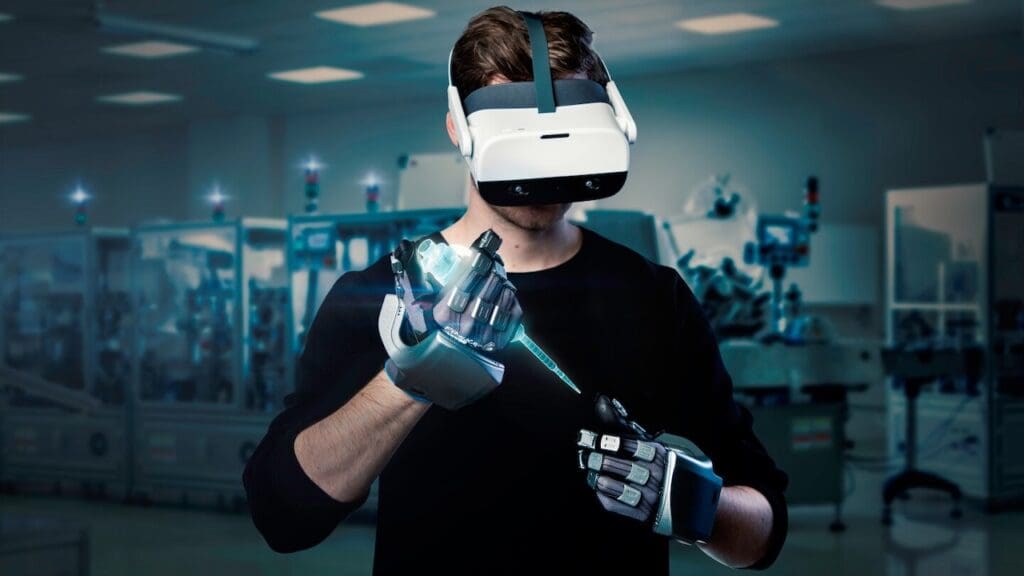Meta is developing high-tech tactile gloves to enhance sensory experiences in the Metaverse, aiming to enable users to physically feel this virtual environment.
Formerly known as Facebook, Meta is not only exploring the future of the Metaverse but also focusing on creating tools and equipment to establish it as an alternative reality. They are working on a tactile glove designed to let users touch objects in this alternate world.
Meta acknowledges the current limitations in virtual dexterity compared to the real world but is attempting to bridge this gap with these gloves.

The gloves are designed to help computers understand and replicate the user’s hand movements, while also providing a user experience through complex sensations like pressure, texture, and vibration.
Meta describes the envisioned user experience with these gloves: “Imagine assembling a virtual 3D puzzle with an ultra-realistic 3D avatar.
When you lift a virtual puzzle piece, your fingers’ movement is precisely mimicked, making you feel the piece in your hand. As you examine it closely, you experience the edges’ sharpness and the surface’s smoothness, capped by a satisfying click when it snaps into place.”
Sean Keller, director of research at Reality Labs, explains that instead of multiple miniature motors, the gloves use microfluidics to alter material hardness, enhancing the sensory experience.
Sophie Kim, UX research science director, notes that our brains are adept at creating physical sensations even in the absence of a physical object, leveraging our perceptual abilities.
Mark Zuckerberg, on his Instagram profile, shared insights into these Metaverse gloves: “Meta’s Reality Labs team is working on tactile gloves to render realistic tactile sensations in the Metaverse.
Eventually, you’ll be able to feel textures and pressure when interacting with virtual objects.”
In a blog post, Meta indicates that the team behind this invention envisions what the world could look like in about 10 to 15 years with such advancements.
You may also like this content
- The Metaverse: What it is, How to Enter, and Its Potential Impact
- Metaverse 5 Reasons Why its Awesome
- Metaverse Coins Buying Guide

